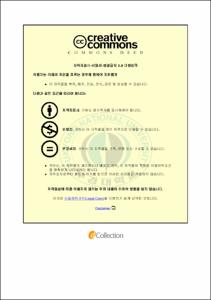Production of bioethanol using red seaweed Kappaphycus alvarezii (cottonii) collected from Indonesia
- Alternative Title
- 인도네시아산 홍조류 Kappaphycus alvarezii(cottonii)를 이용한 바이오에탄올 생산
- Abstract
- In this study, 54 seaweeds species have been screened to investigate their possibility for bioethanol resources. Carbohydrate was found to be the main component in seaweed samples, ranged from 11-64% g/g. In an acidic hydrolysis, carbohydrate was converted into monosaccharide which can be fermented by yeast to produce ethanol. Among these seaweeds, Kappaphycus alvarezii is one of the most potent candidates to produce ethanol. The ethanol yield in the fermentation of the hydrolysate K. alvarezii was 0.36 g/g galactose, which corresponded to 70.6% of theoretical yield. The second part of this study was focused on the optimization of hydrolysis process using different acid catalyst (H2SO4 and HCl). The acid hydrolysis of K. alvarezii using two different acid catalysts was investigated. The dry powder of K. alvarezii were hydrolysed using autoclave with H2SO4 and HCl, in the condition of acid concentrations (0-1M), subtrate concentrations (0-10%), hydrolysis times (0-90 minutes) and hydrolysis temperatures (0-1300C). The optimal condition in H2SO4 and HCl hydrolysis was achieved when the hydrolysis was carried out using 0.2 M of H2SO4 at 1300C for 15 minutes. The different hydrolysis conditions revealed a variation of galactose, glucose, reducing sugar and total sugar content. They also showed different pattern of by-product compound such as HMF and levulinic acid. The hydrolysate samples were fermented by Saccharomyces cerevisiae without prior detoxification treatment. The fermentations were carried out at 300C and initial pH of 5.
In the third part of this study we focused on the inhibitors which produced during the hydrolysis process. K. alvarezii has great potency for bioethanol production. Similar with the hydrolysate land-plant, the known inhibitors such as HMF and levulinic acid also occur in hydrolysate K. alvarezii. The occurrence of these compounds in hydrolysate K. alvarezii revealed inhibition effect on fermentation. Detoxification treatments are needed to remove those inhibitors for improving the fermentability of hydrolysate K. alvarezii sample. Two different detoxification methods i.e. activated charchoal and overliming were applied on the hydrolysate sample. Activated charcoals and Ca(OH)2 prepared at various concentration were observed and used to improve the fermentability of hydrolysate sample.
In the fourth part of this study we observed eleven K. alvarezii samples from different areas in Indonesia. Indonesia is one of the highest producers of K. alvarezii in the world and also one of the best area to culture K. alvarezii species. This study concludes that Indonesian K. alvarezii contain high carbohydrate, hence it can be a good resource in bioethanol production, and some area such as Bone, Papua, Lombok and Makassar can be a potential area to grow K. alvarezii in Indonesia.
From overall studies we conclude that seaweed could be a good alternative to replace our dependency on land plant resources for bioethanol production. K. alvarezii is one of the potential red seaweed species for production due to their high carbohydrate content and high biomass in the world. The optimum sugar yield can be achieved under optimum hydrolysis condition with appropriate catalyst. The optimum ethanol yield can be produced under optimum fermentation condition with the suitable microorganism. To increase the ethanol yield can be done by removing the inhibitors contained in the hydrolysate K. alvarezii using activated carbon. Indonesia can be a potential area for K. alvarezii cultivation, some particular area such as Bone, Papua, Lombok and Makassar can be recommended for the cultivation.
- Issued Date
- 2010
- Awarded Date
- 2010. 8
- Type
- Dissertation
- Publisher
- Pukyong National University
- Department
- 대학원 생물공학과
- Advisor
- Yong-Ki Hong
- Table Of Contents
- List of Figures …………………………………………………………………………………… iii
List of Tables …………………………………………………………………………………… v
Abstract ………………………………………………………………………………………… vi
Chapter 1
Kappaphycus alvarezii : Its biology and potential value
Biology, taxonomy and morphology 1
Carrageenan 6
Aquaculture 7
Potential value 10
References 12
Chapter 2
Kappaphycus alvarezii (cottonii) as the potential resources for bioethanol production
Abstract 14
Introduction 15
Materials and methods 16
Results and discussion 18
Conclusion 21
References 26
Chapter 3
Comparison sulfuric acid and hydrochloric acid as catalysts in K. alvarezii hydrolysis
Abstract 29
Introduction 30
Materials and methods 32
Results and discussion 33
Conclusion 37
References 44
Chapter 4
The inhibitors of hydrolysated Kappaphycus alvarezii (cottonii) and their detoxification methods
Abstract 47
Introduction 48
Materials and methods 50
Results and discussion 52
Conclusion 54
References 64
Chapter 5
The potential value of some Kappaphycus alvarezii (cottonii) from nine different areas in Indonesia for bioethanol production
Abstract 66
Introduction 67
Materials and methods 68
Results and discussion 70
Conclusion 72
References 84
Conclusions 85
Summary in Korean 86
Acknowledgements 88
- Degree
- Doctor
- Files in This Item:
-
-
Download
 Production of bioethanol using red seaweed Kappaphycus alvarezii (cottonii) collected from Indonesia.pdf
기타 데이터 / 1.93 MB / Adobe PDF
Production of bioethanol using red seaweed Kappaphycus alvarezii (cottonii) collected from Indonesia.pdf
기타 데이터 / 1.93 MB / Adobe PDF
-
Items in Repository are protected by copyright, with all rights reserved, unless otherwise indicated.